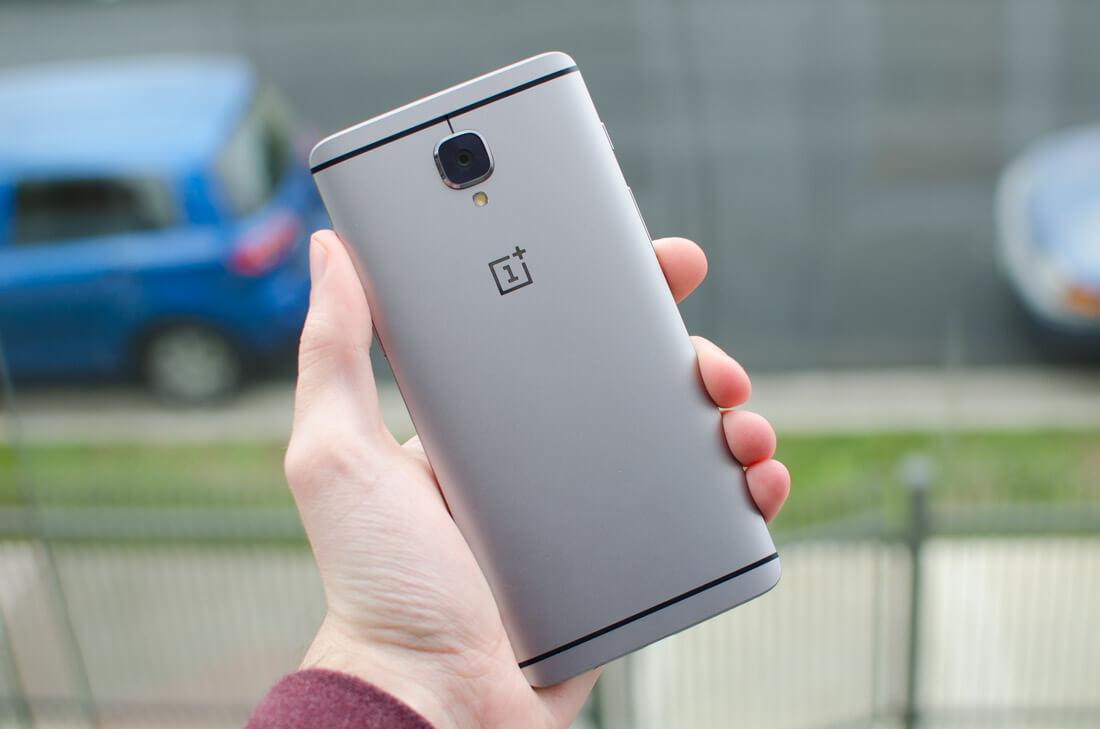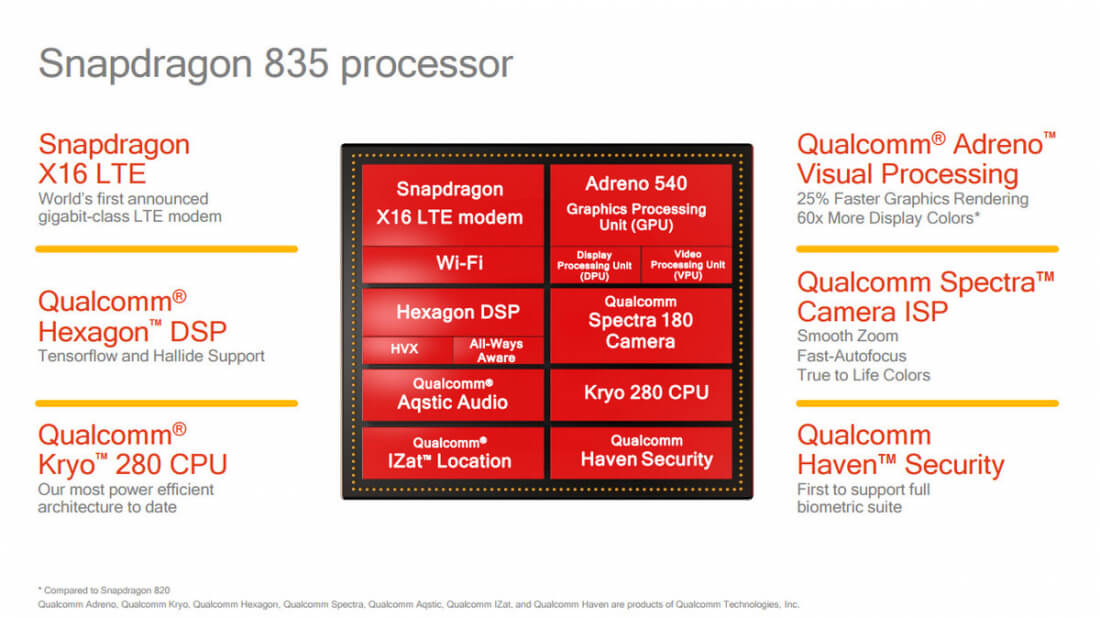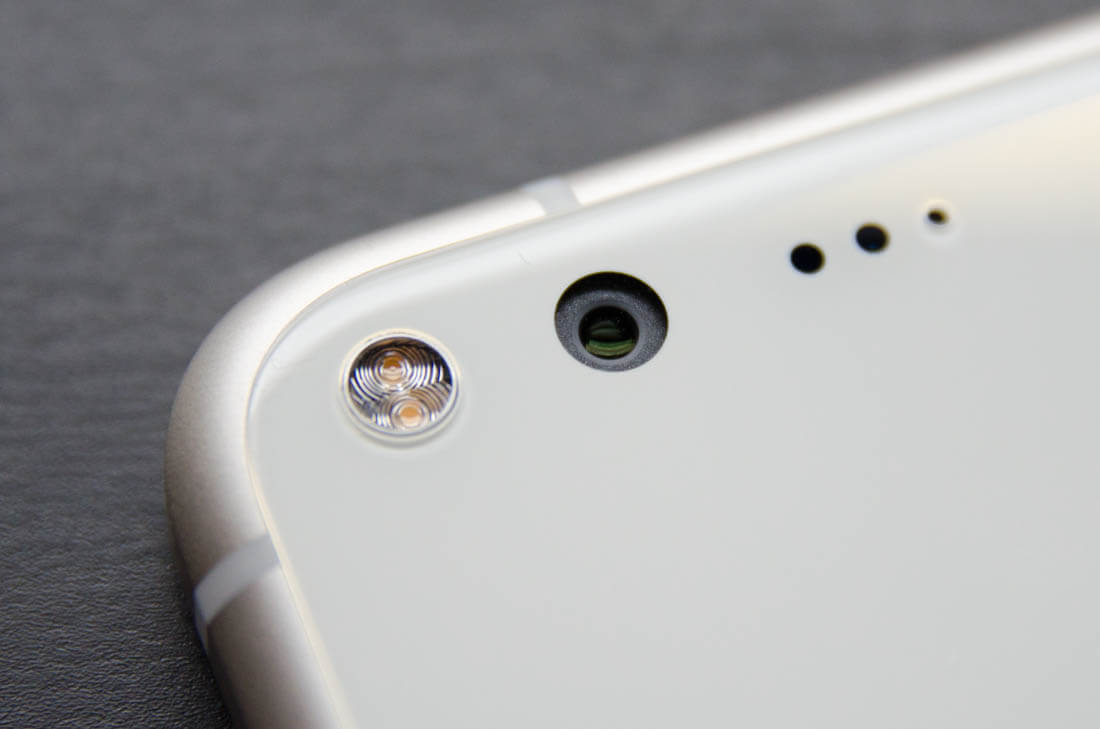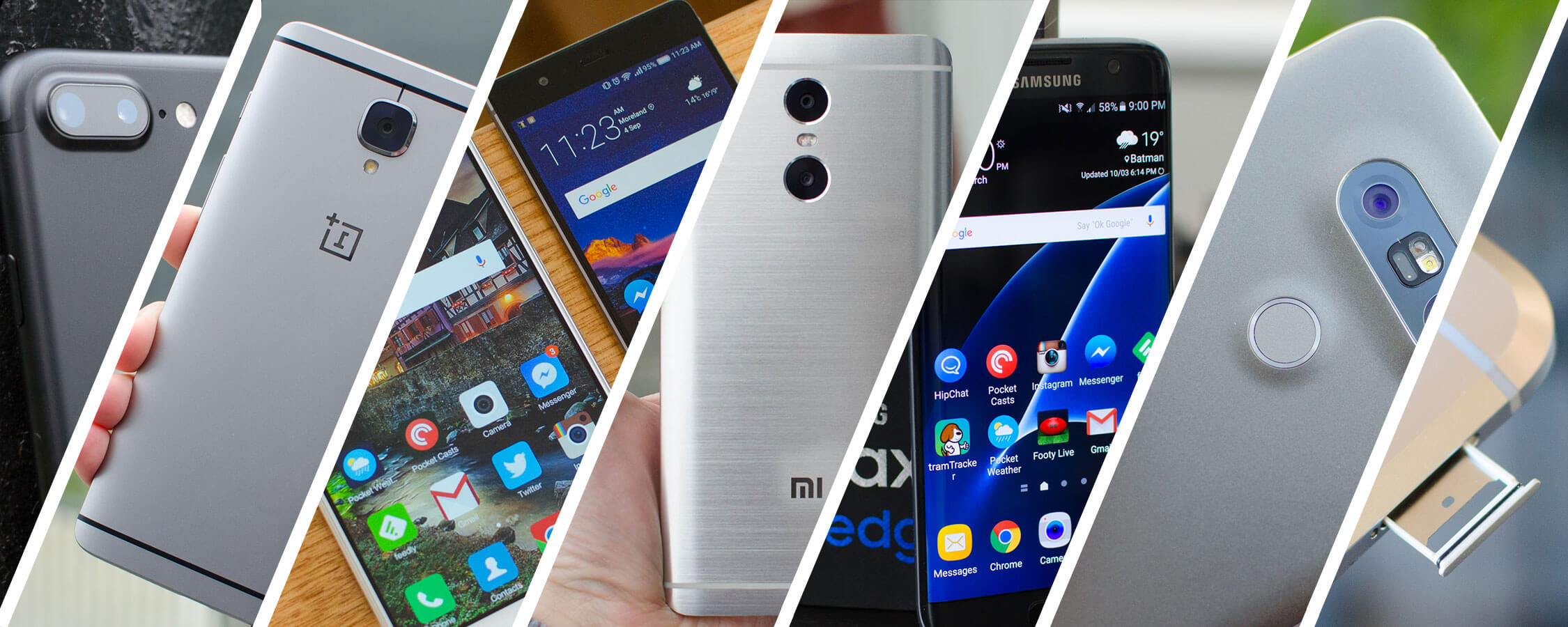2016 was another year where, for the most part, it was hard to pick a bad smartphone. Sure, the Galaxy Note 7 was an exploding disaster, and as we predicted the LG G5 was a disappointment, but we saw plenty of other fantastic options from manufacturers both big and small. It also seemed like phone makers in 2016 were listening to consumer feedback and improving their designs to include more features and make fewer trade-offs, and that was a good trend to see.
And yet my quest for the perfect handset continues. Some phones came close - I loved the Google Pixel XL and the Galaxy S7 was pretty good, too - but nothing was without fault. I still caught manufacturers packing weak batteries in their most powerful phones, while loading out their budget options with massive batteries. I still struggled to use some horrendous software distributions, even though stock Android is available for all to implement. And I still saw phones that failed to include key features, like microSD card slots and front facing speakers.
In this article, I'll be exploring the perfect smartphone; the flagship phone I want to see in 2017. Every aspect of this phone's hardware and software is grounded in reality, so unfortunately next-generation technologies like lithium-air batteries and 35mm-class camera sensors have been ruled out. This is a smartphone that should be possible to create, and something I would absolutely love to see hit the market.
Display: 5.3-inch 1440p Flat AMOLED

The first thing to lock down about any prospective smartphone is the screen size, as it dictates the size of the phone overall. Larger phones with 5.5- or 5.7-inch screens do provide a better experience for viewing videos and playing games, but I'd prefer a smaller 5.3-inch display for comfort and everyday usability. 5.3-inches is, in my opinion, the perfect mix between screen real estate and ergonomics for someone with average-sized hands like myself.
For those that read my ideal smartphone article last year, most of this section will be familiar to you.
I've once again opted for a 1440p AMOLED. Some may prefer a 1080p display for performance or battery life reasons, however across 2015 and 2016 I saw no appreciable difference in either aspect between premium devices that used a 1080p display, and those that went for 1440p. If there's no difference, you may as well opt for the better technology.
There's another factor at play here: virtual reality. While this was only a passing thought in last year's article, the rise of Google Daydream towards the end of 2016 makes a VR-capable display a requirement for any flagship phone in 2016. For the best VR experience, you want the highest resolution, which is why 1440p here is a far better choice than 1080p. A 4K display was considered - we saw one in Sony's Xperia Z5 Premium - but I opted for 1440p as current smartphone SoCs would seriously struggle to run mobile VR apps at native 4K.
AMOLED technology was used for several reasons. It provides better black levels and contrast, leading to a better display experience in both everyday usage and VR. Current AMOLEDs from Samsung also support wider-than-sRGB color gamuts, which can deliver more vibrant imagery provided they are calibrated correctly. My ideal smartphone would introduce color management to Android and have a screen calibrated to Adobe RGB or the DCI-P3 color space. AMOLEDs are also more responsive than IPS LCDs, and this is important for virtual reality; this screen would need to hit at least 90 Hz for the best VR experience.
Finally, I don't want a curved display. Sorry Samsung, but I don't see any real-world advantage to your curved-edge displays, like we saw in the Galaxy S7 Edge and Galaxy Note 7. It looks neat, but it introduces more glare and slight distortions at the edges. Software also is not perfect yet in recognizing when you're griping the phone on the edges. Keep it flat, though, and I'll be happy.
Body: Water Resistant OnePlus 3-style Metal Unibody

The Galaxy S7 Edge is a sexy smartphone, but my favorite design of 2016 was the OnePlus 3. My ideal smartphone would take significant design cues from this magnificent piece of hardware, including the gorgeous metal unibody and tough Gorilla Glass 4 screen protection. As a flagship phone, it must look great and feel like a premium device when held, so something like the OnePlus 3's design would be well suited to an ideal smartphone.
I would make some changes to the OnePlus 3's body to make it perfect. The OnePlus 3 is a slim phone, but I'd increase the thickness to accommodate a larger battery (more on that later). I'd slim down the front bezels on all sides - particularly the top and bottom - to reduce the footprint of the phone and make it easier to operate. I'd remove the notification slider switch, but I'd keep the antenna lines, which I think add some interest to the minimalist metal back. The protruding camera module isn't ideal, though the extra thickness could resolve this.
My ideal smartphone would have a fingerprint sensor, but I'd move it from below the display (like on the OnePlus 3) to the rear panel (like the Google Pixel). After testing many fingerprint sensor locations over the past few years, I find rear sensors to be the most usable and comfortable. Front sensors require you to change hand positions and reach below the display to activate, whereas rear sensors are in a natural position for your fingers during usage.
I'd also add two features to my OnePlus 3-style body: IP68 water resistance, and dual front-facing speakers. 2016 brought us a beautiful water resistant metal unibody design, the Galaxy S7, and my ideal smartphone would look to replicate this success. It's not a crucial inclusion, but IP68 water resistance would keep this expensive phone protected from accidental liquid spills and submersions. Plus, with current technology, you won't need any ports or flaps for this functionality.
As for dual front facing speakers, this is a feature we're seeing less and less in high-end phones, to my great disappointment. There is no better way to enjoy videos and games on your phone than with front facing stereo audio, and while you might be using headphones most of the time, stereo is the way to go when you aren't.
Processor: Qualcomm Snapdragon 835

This early in the year it's hard to say what processor will come out on top, but in 2016 it was hard to go wrong with the best hardware from Qualcomm, Samsung or Apple. But because Apple only produces SoCs for their own phones, a next-generation Apple SoC is ruled out as an option for my ideal smartphone. It's a shame, because Apple produces arguably the best SoCs on the market, and I'd love to see their hardware in my ideal phone.
I ended up choosing the Qualcomm Snapdragon 835 over a next-generation Samsung Exynos option for two reasons. Firstly, Snapdragon has beaten Exynos in graphics performance for several generations thanks to Qualcomm's in-house Adreno GPUs. The Snapdragon 835 is said to be 25 percent faster than the Snapdragon 820 in GPU performance, and this extra speed could come in handy for VR.
Snapdragon SoCs also tend to throttle less than their Exynos counterparts in heavy graphics workloads; this improved efficiency and performance management could again be useful in my ideal smartphone.
Secondly, Qualcomm is the industry leader in smartphone modem technology. The Snapdragon 835 comes with their new X16 LTE modem, which supports Cat 16 LTE for up to a gigabit of downstream bandwidth. The X16 modem also supports 256-QAM, 4x4 MIMO and 4x CA for a class leading array of cellular connectivity. The Snapdragon 835 also supports Bluetooth 5.0 and Wi-Fi 802.11ac/ad.
The Snapdragon 835 will be very powerful from a CPU perspective, and pack improved power efficiency thanks to a shift to Samsung's 10nm FinFET process technology. We'll be seeing this chip in a lot of smartphones in 2017, and it'd be a great fit for my ideal handset.
Camera: Sony IMX260 with Dual Pixel and OIS

Dual cameras are all the rage, and the ideal smartphone would pack the best dual camera system around. Influenced by the iPhone 7 Plus, the ideal smartphone would pack two identical rear sensors, with different lenses: one at 24mm for standard wide-angle shots, and a second at 72mm for 3x zoom.
There are several dual camera implementations floating around, but I've chosen a secondary zoom lens as it's the most useful.
I like LG's wide-angle camera solution, as there are many cases where a larger field of view can come in handy. Huawei's dual sensor setup that provides increased detail and depth of field effects is also neat. But the one thing I frequently find myself needing is extra zoom range from a smartphone camera. You can only get so much detail and quality from digital zoom, which is why a 3x zoom lens would be very handy for day to day photography.
Both rear cameras would be based around Sony's IMX260 CMOS sensor, the same 12-megapixel sensor found in some Galaxy S7 units. The IMX260 is a 1/2.5-inch sensor with 1.4μm pixels, leading to better low light performance than sensors with 1.1μm pixels. It also features dual pixel technology, which will make the ideal smartphone one of the fastest smartphone cameras at focusing and capturing images. As dual pixel technology provides excellent phase detection autofocus, there is no longer a need for a laser-assisted system.
Last year I opted for a single 23-megapixel IMX300 sensor with 1.1μm pixels, so this new camera would be a downgrade in resolution. However, the IMX260 with proper processing provides excellent levels of detail, and has better clarity in low light due to larger pixels. While wide-angle shots will have reduced zoomability compared to its predecessor, the addition of the zoom camera improves the overall zoomability of this camera solution, leading to better images and a greater ability to see distant objects.

Both rear cameras will feature optical image stabilization to improve low light performance. Both will also be capable of shooting 4K video at 30 FPS, alongside 1080p at 120 FPS and 720p at 240 FPS, with high quality stereo audio. The wide angle camera will use an f/1.9 lens, while the zoom camera will use an f/2.2 lens as increasing the aperture of this 72mm lens any further would have led to a larger-than-reasonable camera module.
The front camera will be another Sony IMX260, this time paired with an f/1.7 24mm lens and OIS. The ideal smartphone won't be the first handset with OIS for its front facing camera (the HTC 10 included this feature), but it's a smart inclusion that helps deliver the best low light selfies. Again, this sensor would pack 4K video recording.
On the software front, the ideal camera would use Google's camera application and image processing. The Pixel includes the best image processing I've seen in a smartphone camera, including zero shutter lag HDR, which is why Google would be enlisted to optimize the camera experience of the ideal smartphone. I'd also borrow Google's 4K image stabilization technology to ensure the ideal smartphone takes amazingly steady handheld video footage, while inspiration would be taken from LG's camera software to create a full manual mode with support for RAW image capture.
